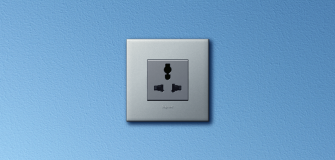5 Tips for Effective Data Center Network Management
5 Tips for Effective Data Center Network Management
Every day, thousands of data center managers face several problems, such as decreased performance efficiency and exceeded capacity while trying to manage data center networks effectively. To successfully oversee a data center network, IT teams need to study topology, brush up on the latest standards and weigh the impact of upcoming technologies like SDN.
According to the Data Center Technology, it is estimated that more than 40,000 people at any one time were forced to sit in virtual waiting rooms after rushing to a website advertising healthcare benefits.
Such cases highlight the fact that data center managers need to ensure their network management is up-to-date for their strategy to stay ahead of organisational needs.
Here are five tips for ensuring effective data center network management which will help set up an agile, flexible and scalable network for your business.
1. Maximise Storage Capacity
Capacity planning has always been an essential aspect of data center network management. But now, in the virtual era and cloud computing, capacity planning has become even more critical. It is almost impossible to use traditional methods of storing data. Companies need to upgrade them by using the latest technological advancements.
This means being able to store a vast number of data points, inputs and metrics and be able to analyse them to predict future requirements and changes in future.
Legrand Data Center Solutions (LDCS) supports the increasing need for businesses to store and improve on their existing infrastructure.
By supplying an array of products including server racks, structured cabling, rack sensors and fiber optics, organisations can always remain at the top of their game.
Hence, managers are advised to go for storage and capacity tools that will help them analyse the data in a way that they can overlook all possible outcomes and reduce cost and risk as well.

2. Upgrade Data Center Architecture
Traditional technology had data flowing in a north to south format, which would often create bottlenecks as data would pass; hence disturbing your flow.
New technologies, like hyper-converged infrastructure, help in ensuring data flow from east to west. One such structure is Leaf-Spine architecture that can help multi-directional data flow. This form of architecture also helps in reducing the number of cables and switches.
Leaf-spine is also beneficial for logical networking of data centers as information is shared more directly and efficiently between devices.
While updating your network topology, make sure to include leaf-spine architecture to help you use Software Defined Networks (SDN).
3. Oil Your Data Center Infrastructure Management Software
A well-oiled data center is the key to efficient network management. It helps in reducing risk, maximising the uptime, and faster delivery of services and applications at a minimal cost.
Data Center Infrastructure Management (DCIM) also helps in simplifying data to a great extent. It helps the operator to run efficient data center operations and improve infrastructure planning and design.
Maximise Uptime
If you’re looking at increasing your efficiency and maximising your productivity, infrastructure management is vital. It helps in collecting trends, reports on data and also monitors any violations. This will alert you, and you can act on any deviations beforehand.
Increase Productivity
An oiled infrastructure will also help you increase productivity by reserving, moving, adding, and making changes to create automated workflow management.
Drive Efficiency
Infrastructure management software helps in building feeds, IT and non-IT loads for immediate calculation for your data centers to ensure efficiency.

4. Asses Fiber Optic Cables
If you lack high-speed connections, fibre-optic cables can be your saviour. Consolidations and IT trends tend to stress the copper cables out.
If you ever needed to cable a link over 330 feet, you should be familiar with fibre optic cables as copper cables can only reach 330 feet. On the other hand, fibre optic cables can support up to 700 feet.
Fibre optic cables have an SX based optic which is common in small form-factor pluggable (SFP). It is a standard model for 1 GbE, SFP+ modules and allow for 10 GbE in the same form factor.
Digital Diagnostic Monitoring (DDM) is helping fibre optic cables evolve. As information will pass through the wire, IT teams can troubleshoot links and switch issues with DDM. It is essential to make adjustments to fibre optic cables as more bandwidth will be required in future.
5. Collect Supplemental Data
Often data center managers face issues and receive alerts when there is a problem on the network, but don’t have the necessary information to investigate it.
For situations like these, check the logs on the devices and servers. Make sure they have enough space to store data and events over an extended period. Backup your data for making it more efficient.
You should also capture the network traffic that goes in and out from devices on your important infrastructure list. Try to track down who is connecting to your system and what data is being accessed.
Ideally, you should have a log of application-specific information. What files are being accessed, database queries, and also the pages that are being visited on your website.
At Legrand, we offer the ideal network distribution and monitoring solutions. Known for their reliability, agility and efficient design, our products have earned us industry-leading roles.
Learn more about our data center solutions here: Busbar Power Distribution for Data Centers – Starline Power




















